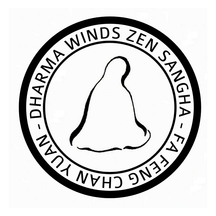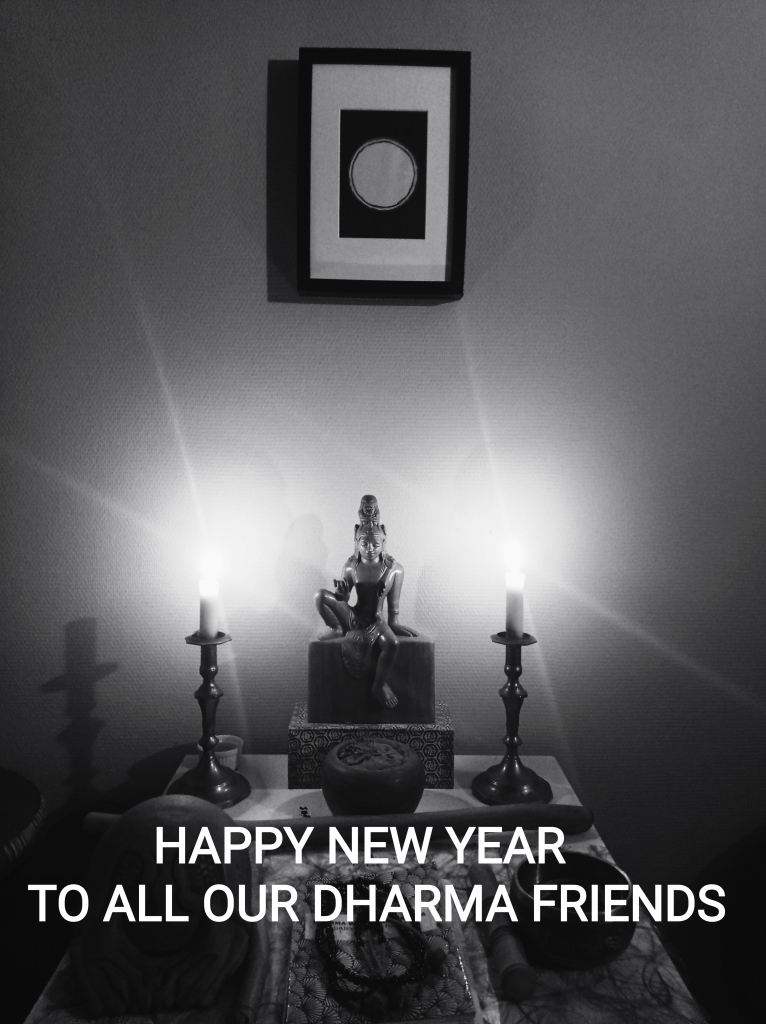The Four Ennobling Truths and the Four Immeasurable Vows
When one develops some interest in the Buddhist teachings, one of the first teachings he’ll find will be the one called the “Four noble Truth”. And we must say it is probably the most shared one of the whole Buddhist spectrum. For most of the Buddhist traditions, may they be Southern Theravada or Northern Mahayana, it is the first and most central teaching given by the historical Buddha. It is a quadruple path, a synthetic composition, gathering the great aspects of his doctrine. It is a fact that this teaching is part of the teaching corpus of every single Buddhist school, from the more traditionnals to the more modern ones.
But what is the content of these crucial “Noble Tuths”?
First, as we said earlier it is a synthetic way of looking at the crucial steps of the Buddhist path towards enlightenment. It points, thus, to the fact that the path we choose to follow, far from being a static journey, is “a dynamic harmony”. We could say it is a process, an ennobling process in a way. An ennobling process that is put into practice and flourish in our lifes day after day. We could say then that these “Noble Truths” could be called “Ennonbling Truths” to put the accent on the progressive and experiential aspects of these Truths.
So, what about these “Ennobling Truths”?
We can find this teaching in the First Sutra of the Buddha, relating his first teaching after his enlightenment under the Bodhi Tree, called the Dhammacakkappavattana Sutta.
We could say in essence that they consist in:
The Truth of dukkha
The Truth of the origin of dukkha
The Truth of the Cessation of dukkha
The Truth of the Path leading to the Cessation of dukkha
Isn’t it clear now? Seriously, what is this dukkha that seems so central? It is generally translated as “suffering”… and here it is the famous preconception about Buddhism being Nihilist is back in your minds. More seriously, we could translate it as “the suffering born from insatisfaction” or lets say the suffering born from always wanting something new, always wanting to escape from impermanence by doing or wanting something. In a certain way it is the suffering born from our incessant tendency to occupy our mind and energy, what is sometimes described in the Buddhist teachings as the constant “craving”, or “desire” that seems inherent with being alive.
And to put it in a more Zennish way, that is the whole paradox, that is a great gongan (koan)… There is a craving which is inherent to being alive, and at the same time the Buddhist path has is consecration in Nirvana… which is exactly the end of this craving. Then how to attain this Nirvana, while being, at the same time, both alive and without cravings.
Well … that is not the Buddhist path. It’s a Western, very modern and quite nihilist, view of the Buddhist path.
There is nothing about having no desires at all in the Buddhist teachings, the whole practice of Chan/Zen Buddhism is to, ultimately, not fall into following our profound personal tendencies, the game of our Ego. But understanding that the practice is not a path of total suppression that could only result into tensions and problematic psychological subeffects is essential, because that’s the exact contrary of what True Buddhist Practice should be leading to.
This question could be the subject of a book by itself and I won’t carry on, but just share some basic contextual informations. In Mahayana Buddhism there is a central concept shared by the Indian scholar Bodhisattva Nagarjuna, (150 CE), in his Mūlamadhyamakakārikā, the concept of the “Two Truths”. The Two Truths of Nagarjuna, namely the “absolute truth” or “non-conditional reality” and “conventional truth” or “relative reality”. Nagarjuna states that there is no fundamental difference between these two truths, altought we feel the contrary because we are driven by our Ego. This is the Essence of the “Heart Sutra” and the majority of the Prajnaparamita Sutras.
“Śāriputra, form is not different from emptiness, and emptiness is not different from form. Form itself is emptiness, and emptiness itself is form
In Zen, we usually express this reality in terms of polarities: Form-Emptiness, Absolute-Relative, Nirvana-Samsara. But in none of these major Mahayana traditions we can find an opposition, in terms of contradiction or duality, in the two parts of these polarities. They are fundamentaly One, yet they are Multiple manifestation. And the One Net behind all these realities is fundamentally “Empty”, we could say it is a realm of “pure possibilty” of manifestation.
The Four Noble Truths are a simple yet synthetic formula, but it can also feel like an immense “mental cliff”, of a pharaonic difficulty suddenly rising in front of the sincere practitioner. Indead, the Four Noble Truths are of an almost gigantic scale, so much indeed that we could be horrified in front of the arduous task to accomplish.
Luckily for us, Shakyamuni Buddha didn’t just proclamed the the Four Noble Truths, he also revealed the Path leading to that “Cessation” when revealing the Eightfold Path. This teaching is also accepted by every school of Buddhism, even if every tradition has its own way to put it in practice. They simply don’t understand it the same way, and more profoundly, don’t make it a living reality in the same way.
This being said, lets get back to the Four noble Truths. What objectives do they pursue?
Asking oneself sincerely this question could quickly, and prosaicly, lead into asking oneself ”what has the Buddha to propose? And could maybe lead into asking “what is the utility of Buddhism”?
Each Buddhist tradition defines answers in his own terms, basically it is not a matter of definition or philosophy. It is about experimenting the reality that the Buddha named “Cessation” (ch.: Chi or Zhi ; jp.: Shi) of Suffering. This is the cessation, the end, of the insatisfaction born from our natural tendency to “build, nourrish and believe” in a “separate self”, or “ego”, which in the Buddhist view is purely conventional. I believe this conventional “I or Ego”, isn’t a bad thing per se, we need this kind of concept to deal with others in our day to day life. But “nourrishing this concept” as a reality, not conventional but as the “core of reality”, is a consequence of our own confusion or ignorance of “what we really are”. In this process, resides the beggining of a “profound gearing” in ourselves that inevitably separates us from “What we are” as a living reality.
We could thus summarize saying that the Buddha showed us a path to get out of the confusion we live into, a confusion that is the source of our suffering and insatisfaction. It is thus a method that puts us in front of “what we are” beyond our own illusions, in a non-separate or non-dual way. Here too, every Buddhist tradition elaborated their own terms to qualify the “non-separate reality” that we both “are” and “participate with”, beyond illusion, confusion, and thus beyond words.
Now, these concepts could seem easier to understand… beware, as we all know but forget to often, it is one thing to intellectually understand the concepts, it is another to put them in practice and to express them in our lives And here is an important aspect of the Buddhist teachings, they aren’t dogmas that should be learn by heart, but a realization that we must make flourish ourselves, in the fertile ground of our daily minds.
Of course, when looking for inspirations in the Buddhist teachings, we might be found guilthy of a certain affinity for what looks exotic, Asian, just different from our Western, largely Christian based background. And, in a way, it is a kind of skillful mean. We might first be interested in Buddhism because of all these exotic particularities, we will face soon or later an important matter… we don’t live in an antique Asian city, our everyday life is far from Brahmans and mango groves, and it might be disapointing at some point. But it is an important step to make in the Path, a needful realization to pass from a passive admiration to an “experimental realization”. Realizing the Truth of the Buddha’s teaching in our life and actualizing it, wich means “acting in accordance with this profound realization”, is a matter of harmonizing with each situation, and it is thus totally linked to different societal and cutural contexts we might face, Asian or Western.
Thus the task remains gigantic and we may be very enthousiast and dedicate, it is still very difficult to express these realities in our lifes. That is why the Zen masters of the past transmitted a teaching that is a “wonderful lever”, the “Four Immesurable Vows”.
These “Four Vows” are often said to be “Bodhisattva” vows, wich is an error. They are vows of immesurable scale that are a tool to the practitioner on the Bodhisattva’s Path. But too often in our informal Zen Centers, the term “bodhisattva” is used to named different things.
The Four vows first, but also the so-said “Bodhisattva precept”. These precepts are in fact the precepts of the “Brahma Net Sutra”, a major Sutra of Mahayana Buddhism and a sort of earlier version of the Avatamsaka Sutra. They consist, in general, in the 10 major precepts of the Brahma Net Sutra, the “lesser” 48 precepts being generally unknown to most Zen Buddhists.
Most Zen people never read the sutra, they thus don’t understand that these precepts are a practical articulation of a 10 step Bodhisattva Path described in the first part of the Sutra. To their defense, most Japanese monasteries, in a fashion instored by Saicho of the Tendai Sect of Japanese buddhism, only read the seconf half of the Brahma Net Sutra, the one including the precepts. Lacking thus the articulation between the two.
I must also note that China had his own relation to the precepts and in particular the “Bodhisattva precepts of the Brahma Net Sutra”. But they didn’t retract their view of the original 10+48, they originally didn’t generalized these precepts to every single Buddhist follower and certainly didn’t used the name “Bodhisattva” to designate a lay follower who just took his first vows, as it is so often found in most Zen Centers today.
(These notions will probably the subject of a future article in the following months… )
Now that these distinctions have been made, lets get back to the Four Vows. They are in fact a profound aspiration to realize the Four Noble Truths in our lives, to realize our True Nature and to harmonize with all things trough Compassionate actions.
We can thus put side by side the Four Noble Truths and the Four Immesurable Vows:
The Truth of Suffering : I vow to save all Beings
The Truth of the origin of Suffering : I vow to cut down all Illusions
The Truth of the Cessation of Suffering : I vow to master all Dharmas
The Truth of the Path leading to the Cessation of Suffering : I vow to realize the Way
The Buddha revealed the context, the processes that are alive in us, and makes us fooly believe in an individual and separated being in a lot of early suttas. From his first sermon, he proclamed the Four Noble Truth and lightenned the “poisonus process” in wich we engaged ourselves trough our habits and thoughts, wich are the first two Truths. He then proclamed the possibility to put an end to this poisonus process and explicited the Path leading to the end of this Self Illusion or Self-Hallucination, the two last Truths.
In all this what about the Four Vows? They are wonderful skillful means, pure aspirations to help us practice. They are like good seeds to plant, nourish and maintain on the Path that the Buddha gave us, the Eightfold Path.
Thus, each of these four vows is a method, very skillful indeed, to maintain in us a strong aspiration and dedication to realize the Four Noble Truths in our lives. But these aren’t a trivial thing, these are vows. A Zen practitioner should give importance to what he says, to what is being planted and nourished in his own MindGround. Taking vows isn’t a trivial thing indeed, but what a wonderful help.
Next time you recite them in your Zen Center, remember how they are related to the Four Noble Truths and, with simplicity and humility express your True Nature by a profound bow to All Buddhas and All Beings, without distinctions of time and space.
Amituofo!














